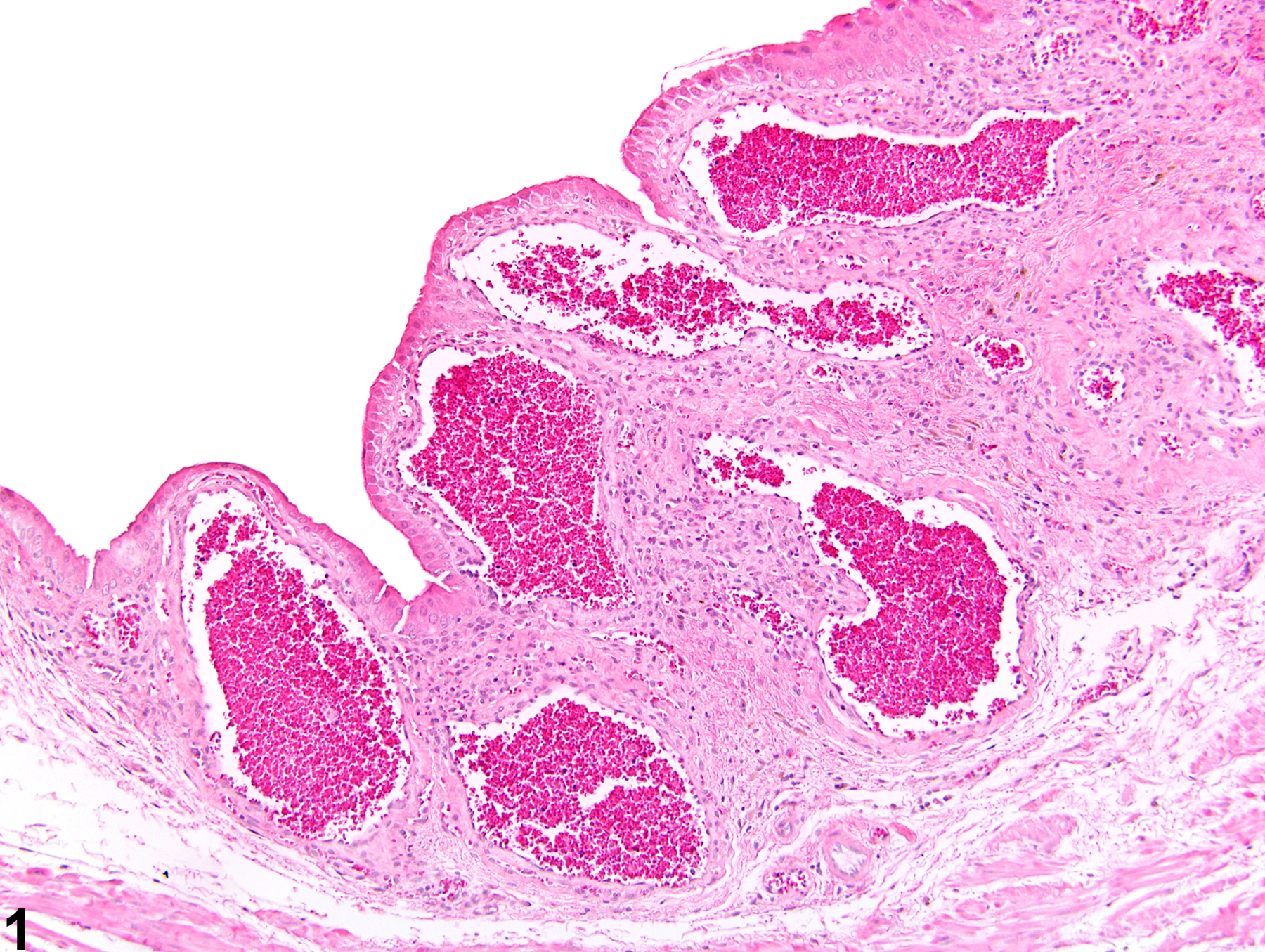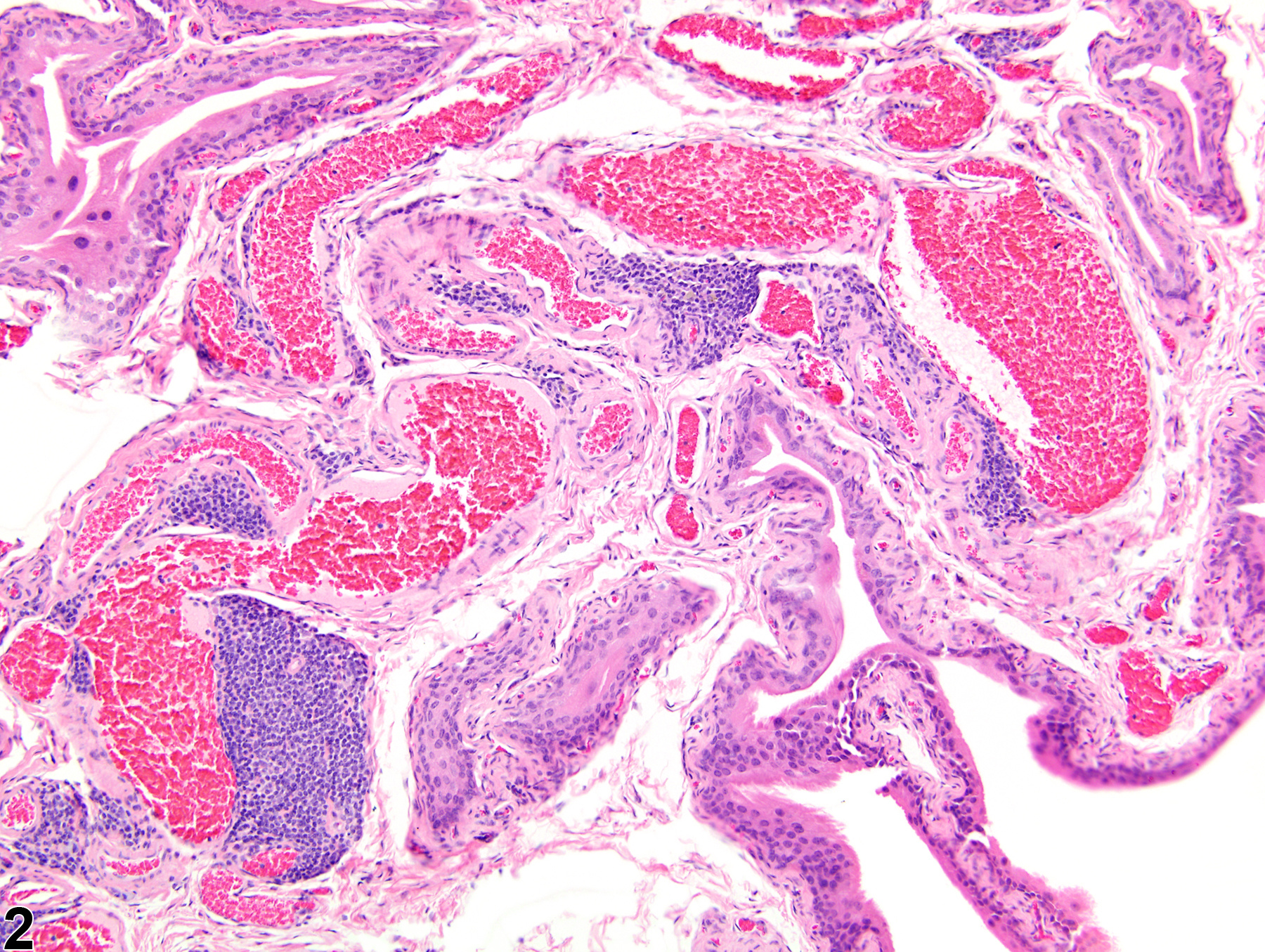Urinary System
Urinary Bladder - Angiectasis
Narrative
Angiectasis must be differentiated from hemangioma. The distinction is not always obvious: hemangiomas tend to be well circumscribed, unencapsulated masses composed of tightly packed dilated vascular spaces, each enclosed and lined by a single layer of normal-appearing endothelial cells aligned on a thin collagenous stroma.
Gaillard ET. 1999. Ureter, urinary bladder and urethra. In: Pathology of the Mouse: Reference and Atlas (Maronpot RR, Boorman GA Gaul BW, eds). Cache River Press, Vienna, IL, 235-258.

Angiectasis. Dilated blood vessels within a fibrous stroma in the urinary bladder submucosa from a female B6C3F1 mouse in a chronic study.



